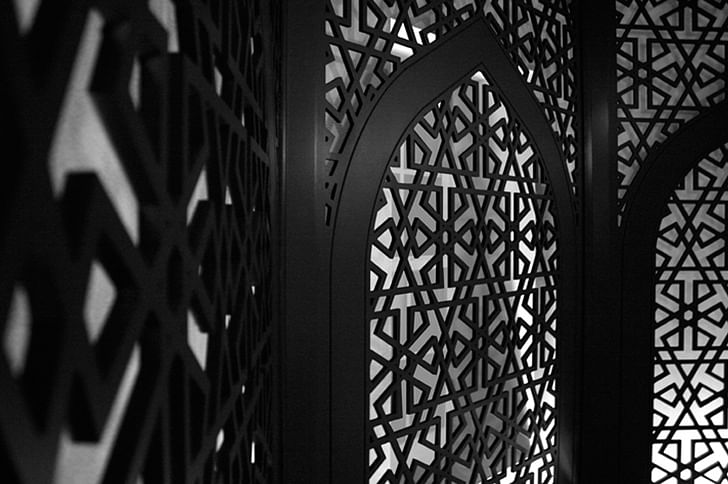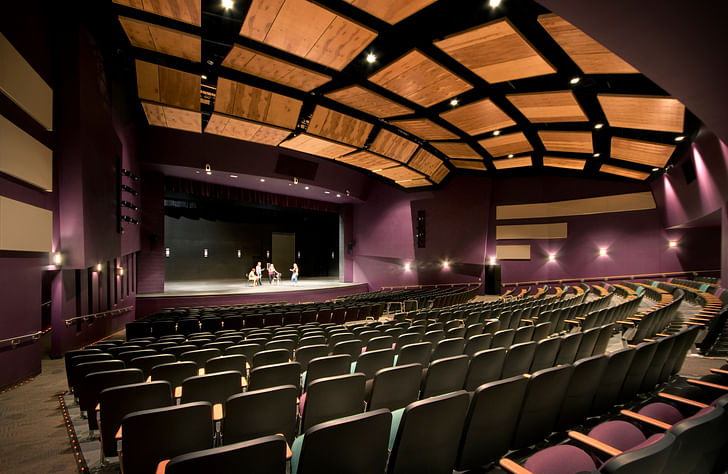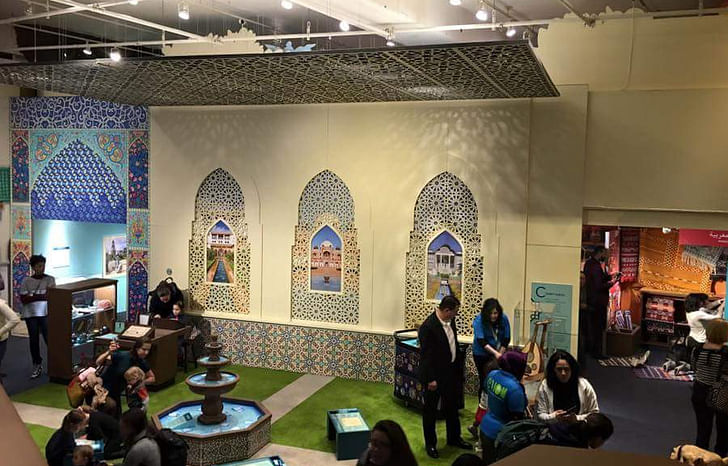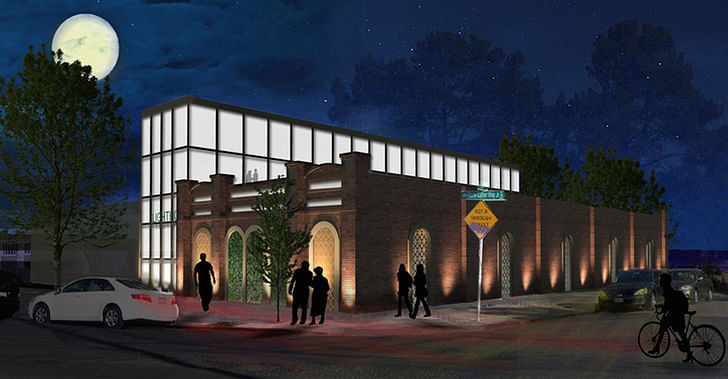

Recently, Archinect has been taking a look at the relationship between faith and architecture. In this interview, we speak to Maryam Eskandari, Principal of MIIM Designs and Adviser in History of Art and Architecture at Harvard University. A practicing Muslim, Eskandari views her practice as an extension of her faith—which means, basically, to make "good architecture" for the 99%.
Would you say that your faith motivates your practice on a day-to-day basis?
I am a practicing Muslim and on a day-to-day operation my faith is kind of weaved into MIIM Designs. Our first office was in Palo Alto and so we grew up in this do-good, altruism, Silicon Valley mentality. That’s had a big domino effect on [our practice]. At the beginning, when we had set up MIIM Designs, it was just a typical architecture firm. But as a practicing Muslim I am mandated...to give 5% of my yearly income to the community or to a non-profit. So, rather than us just donating, we shifted the whole company’s business plan to social enterprise. And that’s where we are now.
the goal is to do and design good architecture regardless of the budget and the clientNot only do I myself donate 5% because of the faith—being a Muslim mandates that—but the company as an entity also gives back to the community, and so does each individual in the studio as well, whether it’s donating their time or their income. It’s been pretty amazing because the non-profit work that we’ve been giving back to, it could be anything. It could be helping redesign African American community churches—you know, [last year], a whole bunch of African American community churches burnt down and so we were helping with that. We’ve been designing wells in Accra, Ghana with clean water. Or [there’s] my role, for example, at Open Architecture Collaborative on the board. It all kind of circles into each other.
But I think, more importantly, the goal is to do and design—and design with a capital D—good architecture regardless of the budget and the client. Someone once said that architects only design for the 1%, and the question that we at MIIM Designs wanted to resolve was [how to] design for the 99%. If we are able to have excellence in design approach for everyone regardless of the project, then perhaps we can resolve some of the current issues at hand, whether it be low income housing conditions that might cause mental health problems, or [other] issues like global warming, gentrification, migration, refugees. So when it comes to the practice itself, when [...] clients come into our studio, we really have to think about whether their project will do good, and, if not, if it’s a personal project like their home or just a renovation, then can the client do good with us? So that they would also be a part of the non-profit that we’re working on, or our specific project that we’re working on.

Would you say that there is a specific kind of way of relating to the built environment in Islam that differs from other monotheistic or non-monotheistic religions?
I don’t think so. You know, I speak on behalf of myself—I can’t speak on behalf of 1.7 billion Muslims or the hundreds and thousands of Muslim architects around the world—but I can say that as for the faith itself, when it comes to like a built environment, there’s a saying from the Prophet Mohammed that says the whole earth is a mosque, and that is something to really take in. It has many interpretations, but means that look, if the community or the Muslim community is so gung-ho about having a great place to pray, then your whole earth is that. You’re responsible for the whole earth. What you take out of the natural environment, what you put on it, how you use it, the resources that it has—those all should be taken into account, you know?
Something that we have been very adamant about [when we do] a project is asking: are we going to cause more harm by doing that project or is there a way that we can reduce our, let’s say, carbon footprint?
You know the first thing that we did? We sat there and watched Disney's 'Aladdin'When you’re approaching designing a religious space, are there certain design elements that you think can help invoke a more spiritual experience?
I think what’s been quite interesting in our approach is [that] we want to make sure that it really does resemble—let’s say if we’re designing for the Muslim community, it really does resemble the Muslim community. And what I mean by that is that unfortunately the Muslim community itself has kind of lost their identity because culture has been so ingrained into the architecture. For example, when we did the Children’s Museum of Manhattan, and they came and they approached us and they said would you design something like an upfront architecture exhibit for kids from 6 months to 12 years that would represent the 1.7 billion Muslims, and it would cover 1400 years of Islamic history? You know the first thing that we did? We sat there and watched Disney’s Aladdin and then we listened to Don Henley’s “The Garden of Allah” and it repeated for five days. Then we went off to visit Trump’s Taj Mahal and then, once we kind of got like the whole Orientalist perception of Islamic architecture or mosque [architecture] out of our system, we stepped back and started reminding ourselves what is the purpose of how you design a space and what elements are important when it comes to these spiritual spaces.
One thing that I’ve come to discover is that other architects like Mies van der Rohe, Louis Kahn, Saarinen, Steven Holl, or even Maya Lin, all have been able to incorporate a lot of the design elements into their architecture that are quite along the same lines and perception as “Islamic architecture”—or what spiritual architecture for the Muslim community should be. I spend a lot of time reading and analyzing these specific architects, and how they were influenced by Kabbalah or Taoism or Sufism and the use of light, space and form. They analyzed these monumental structures from the past to create iconic American architecture. And, also, for example, even the work of Moshe Safdie or Peter Eisenman or Shigeru Ban or others, it’s quite interesting to read up on how they use their faith or their perception of their spirituality to create their spaces or their forms. I’ve been channeling their footprints in that sense and trying to discover our way through creating those spaces for the American Muslim community. [...]


As a woman who wears a headscarf, have you ever come across any Islamophobia or prejudice in the American architecture community or society more generally?
You know, it’s kind of interesting. Literally what I’m wearing is a scarf—or a hijab—the one I’m wearing is like a carbon color, blackish-grey scarf that I actually bought from VINCE. It’s almost like the same as wearing... what is that underground pantsuit campaign that started for Hillary Clinton?
Pantsuit Nation?
Yeah, pantsuit nation—it’s almost like the same concept you know? There’s billions of people in this world, and not everyone’s going to like what you wear and how you dress. You know the word hijab comes from a [word] which means ‘to dress modestly’, and that can be interpreted in any way one feels to express, but it’s very much like a pantsuit nation: some people like it, some people not so much, some people want to wear a skirt suit, whatever. Same thing with the scarf.
But actually the reactions that I’ve gotten in the past couple of years or months have been quite interesting. I’ll tell you a really funny story that happened recently. About a couple of months ago I was in Orlando at the airport and I was waiting for my ride and I had my headphones on when a gentleman with like broad shoulders who—I mean he looked and branded himself as a Harley Davidson bike rider—came up to me and he asked if I was listening to the Quran or going to do a ‘sharia jihadi thingie’ in the airport.
Oh boy.I asked him if he would like to listen to my ‘sharia jihadi thingie’ and then I unplugged my headphones and ACDC started blasting
And obviously I was confused and I was like “Excuse me?” And he then repeated himself and I asked him if he would like to listen to my Quran and the ‘sharia jihadi thingie’ and then I unplugged my headphones and, ironically, ACDC started blasting with the perfect timing of the line, “While I’m back in black”, and of course, as an architect, we’re always dressed in that color. So I laughed and I was like yeah, this is my ‘sharia jihadi thingie’. And then that actually caused a conversation. He was like “Oh, I’m really sorry” and he realized. And I responded, “No, you know, I’m glad that you reached out; I’m glad that you made the comment.”
But yeah, I mean obviously this isn’t the first time and it’s not going to get any easier for someone like me. I actually remember after the [former] First Lady Laura Bush stated in a press conference when we had just invaded Afghanistan, that we’re going to go into this country to liberate women, do away with misogyny and fight for women’s equality. I was really sad when I heard that, because I thought to myself damn, those women are lucky. Who the heck is going to fight for our equality here in the States? You know?
So true.
The sad thing is that mentality has led us to the issues that we’re facing all around the world—and even in the world of architecture and construction. I remember one of my earliest experience was back in 2007 when I went to go visit one of our projects from a construction site early one morning. They were installing Alucobond panels and they were installing them wrong. Instead of an ⅛ inch gap, which was noted in the CD documents, they were installing them at a ⅓ inch gap, and the construction manager you know had a wrong mental image of what a “Muslim woman” should be—quiet, submissive. You know, typical Orientalist kind of like mentality. And so, basically, let’s put it this way: That day he met his match. You know how construction guys talk on construction sites? As blunt as I am and as candid as I am, I just let it rip. He never thought I would fire back right at him. It took a bit of tough love but we got through it and we’re good friends now.
So yeah. We’ll see what happens.
Thanks Maryam.

For more on the architecture of Faith, check out other articles here.
Writer and fake architect, among other feints. Principal at Adjustments Agency. Co-founder of Encyclopedia Inc. Get in touch: nicholas@archinect.com
No Comments
Block this user
Are you sure you want to block this user and hide all related comments throughout the site?
Archinect
This is your first comment on Archinect. Your comment will be visible once approved.